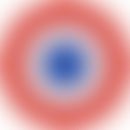Synonym(s)
DefinitionThis section has been translated automatically.
Cutis laxa is the name given to a heterogeneous group of hereditary diseases whose main symptom is a pendulous, inelastic (in contrast to Marfan's syndrome and Ehlers-Danlos syndrome) skin. These cutaneous characteristics are almost always due to loss, fragmentation or severe disorganisation of the elastic fibres. The systemic significance of this disorder of elastogenesis affects different organ systems. Apart from the skin, lungs, vessels and also joints are mainly affected. The hereditary forms of Cutis laxa are triggered by mutations in different genes (e.g. PYCR1, LTBP4, ATP6V0A2 and others), which are functionally involved in the build-up or breakdown or in the organisation of elastic fibres. In principle, autosomal dominant forms can be distinguished from autosomal recessive forms, independent of the gene systematics. If the clinical phenomenon "cutis laxa" or rather "cutis laxa-like skin changes" is considered in terms of differential diagnosis, further hereditary as well as acquired clinical pictures have to be taken into account.
Occurrence/EpidemiologyThis section has been translated automatically.
To date, < 20 affected individuals from seven unrelated families have been described in the literature suffering from ALDH18A1-related cutis laxa.
You might also be interested in
EtiopathogenesisThis section has been translated automatically.
Autosomal recessive Cutis laxa type 3a (ALDH18A1) is caused by mutations in the ALDH18A1 gene. ALDH18A1 is the acronym for "Aldehyde dehydrogenase 18 family member A1" a gene coding for an aldehyde dehydrogenase located in the mitochondria and involved in the synthesis of proline, arginine and ornithine (gene locus: 10q24.1). This gene codes for a carboxylate synthase located in the mitochondria.
ClinicThis section has been translated automatically.
ALDH18A1-associated ARCL is the most severe form within this disease family. Clinically, developmental disorders with progeroid appearance, dwarfism, joint hyperlaxis, microcephaly, strabismus, bilateral cataracts, facial dysmorphy and severe mental retardation are found (Nozaki F et al. 2016).
Radiologically, osteopenia and osteoporosis can be detected, by means of MRI a clear tortuosity of the brain vessels.
Furthermore, one patient showed cyclic vomiting with reduced blood levels of ornithine, citrulline, arginine and proline. No hyperammonemia or other hypoamino acids (Fischer B et al. 2014).
HistologyThis section has been translated automatically.
Expression analysis in dermal fibroblasts of individual patients showed an almost complete absence of ALDH18A1 mRNA, resulting in a complete absence of the ALDH18A1 protein.
LiteratureThis section has been translated automatically.
- Adams E et al (1960) Hydroxyproline metabolism. III. enzymatic synthesis of hydroxyproline from delta1-pyrroline-3-hydroxy-5-carboxylates J Biol Chem 235: 3499-3503.
- Fischer B et al (2014) Severe congenital cutislaxa with cardiovascular manifestations due to homozygous deletions in ALDH18A1. Mol Genet Metab 112: 310-316.
- Nozaki F et al (2016) ALDH18A1-related cutis laxa syndrome with cyclicvomiting. Brain Dev 38:678-684.
- Lin DS et al (2011) Compound heterozygous mutations in PYCR1 further expand the phenotypic spectrum of de Barsy syndrome. Am. J. Med. Genet. 155A: 3095-3099..
- Panza E et al (2016) ALDH18A1 gene mutations cause dominant spastic paraplegia SPG9: loss of function effect and plausibility of a dominant negative mechanism. (Letter)Brain 139: e3
Outgoing links (1)
Aldh18a1 gene;Disclaimer
Please ask your physician for a reliable diagnosis. This website is only meant as a reference.




